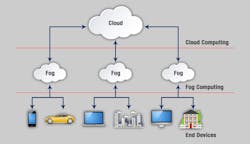Implementing AI and Machine Learning: What You Need to Know
Artificial intelligence and machine learning have clearly proven to be more than a fad and have become a critical component in a paradigm shift for growth and value for any industry. More than any other sector, AI/ML impacts industrial manufacturing in areas such as generative product design, asset performance management, process automation, and quality control to name a few—all with significant impact on the manufacturer’s bottom line.
Analysts and industry leaders see great value in AI/ML use cases in manufacturing. Improving overall equipment effectiveness by reducing unplanned downtime and associated maintenance costs and decreasing supply chain forecasting errors by employing machine learning to improve manufacturing yields that result in better product availability, potentially increasing sales and profitability, are a few examples.
Much as nuclear technology is considered by many to be the future of energy, artificial intelligence and machine learning is the future of industrial manufacturing. The revolution is just beginning. When any technology that has the potential to create a paradigm shift in the industry is introduced, planning and preparation impact future success. Properly implementing AI and ML in the industrial manufacturing business model is a critical first step.
AI Manufacturing Business Models
In industrial manufacturing, data comes from a variety of sources, from on-premise manufacturing execution systems to newly outfitted IoT devices and sensors generating real-time data. The amount of data and frequency of data can pose difficult challenges in understanding and analyzing the information.
Another consideration is incoming data can be erroneous due to harsh environmental conditions, communication issues, and integrity of IoT devices. Plus, the sheer possibility of outliers and their confounding nature must be considered since an outlier that mimics the system can make it difficult to determine which ones are real and which ones are noise.
For instance, one of the industrial ML consulting projects at Persistent involved analyzing the defective coils using various sensor readings. While a significant number of outliers were observed in terms of the percentage of silicon content in the coils, it was later found from algorithmic results that these outliers were indeed a critical factor in identifying defects (>3.6% meant defect in this case) and were not the result of faulty values. At the same time, a number of defective outliers were discarded based on results.
Plan for the Distinct Nature of AI/ML Manufacturing
These distinct characteristics of an AI/ML manufacturing business model mandate a big data ecosystem and strict separation of training and deployment models in the edge computing devices used to handle latency and networking problems, as well as a method for selectively ingesting data from the edge devices. A good experimental design set up to sample the data can be extremely handy for effective modeling.
Challenges, Model Lifecycle, and Dataflow
The unique nature of the use cases, data, and infrastructure requirements presents innumerable challenges when implementing AI/ML solutions. Huge volumes of data in heterogeneous forms, coming from numerous sensors at distant and different locations and with extremely high latency issues, manifest in idiosyncratic modeling, data handling, storage, and model deployment.
The typical industrial manufacturing model lifecycle must accommodate deployment in the edge devices using popular frameworks such as OpenVINO, which enables model rendering and deployment in low-cost edge devices connected to the sensors and IoT devices. (For example, a typical Raspberry pi system connected to a sensor costs less than $35.) The key components are sequenced as follows:
Since the data involved is more than big data with innumerable forms, the data is first parsed to machine-readable form and processed in local edge devices (often using Fog, a local cloud). The data to be used for training is selectively sent to the main cloud setup, thereby solving the latency and connectivity issues since these are the most critical considerations. The high-level architecture of the IoT Cloud computing system is shown below:
Use Case: Sterilizing Surgical Instruments with AI/ML Applications
Computer vision, robotics, and distributed modeling are just some of the numerous cutting-edge AI/Ml industrial manufacturing applications. German-based Certuss produces low-noise steam generators for continuous operation that are used in a wide variety of industries around the world, from automotive and construction to healthcare.
In a healthcare use case, AI/ML streamlines and improves procedures involving sterilizing surgical instruments. The AI/ML solution makes it possible to analyze approximately 60 parameters—for example, pressure, temperature, and water level—for each steam generator in real-time. With the data obtained, predictions can be made as to when and at which point in the production chain possible faults may occur.
Use Case: Reducing Packaging Waste Using ML
In another use case, a large US aluminum foil and package material manufacturer who is a Persistent client wanted to study and reduce waste from its coils using machine learning algorithms. This involved analyzing numerous parameters from the mill, furnace, metal treatment, and thermostat sensors to understand the key reasons behind the waste. Millions of rows of transactional data collected from numerous sensors were first aggregated to analytical time-series information. Descriptive analysis revealed the mill speed to be the root cause of the defect. Modeled with CART (Classification and Regression Trees) and regression algorithms using features like coil weight, crown value, wedge length, caster strip speed, chemical composition, and so on, the key parameters influencing the mill speed and thereby the defects were uncovered.
The result of the machine learning model suggested chemical composition was the primary influencing variable, based on the metal chemistry of the coil. New settings for each mill were recommended, which lead to minimum deviation in the speed, thereby reducing the defects considerably.
AI/ML, the Nuclear Energy of Industrial Manufacturing
Overall, artificial intelligence and machine learning are akin to a nuclear paradigm shift in industrial manufacturing. The benefits to be had are unfathomable and can even transform and fast-track the course of our development. But any mistakes are extremely costly. A blunder in the deployment of machine learning algorithms or the wrong selection of use cases can make or break a company, putting them out of the orbit of growth. A Cisco survey reveals that 75% of IoT projects fail. This is why, no matter how big the company, taking measured steps is critical
Adopting best practices, meticulous prioritization of use cases by considering viability, return on investment, deploying the best talent, and negotiating the resource crunch by augmentation with strategic partners can accelerate and catalyze the process, taking the industry forward and giving a company a formidable competitive advantage.
About the Author
Sameer Dixit
SVP Engineering - Persistent Systems
Sameer Dixit is the senior vice president of engineering at Persistent Systems covering data/analytics, AIML, and integration.



